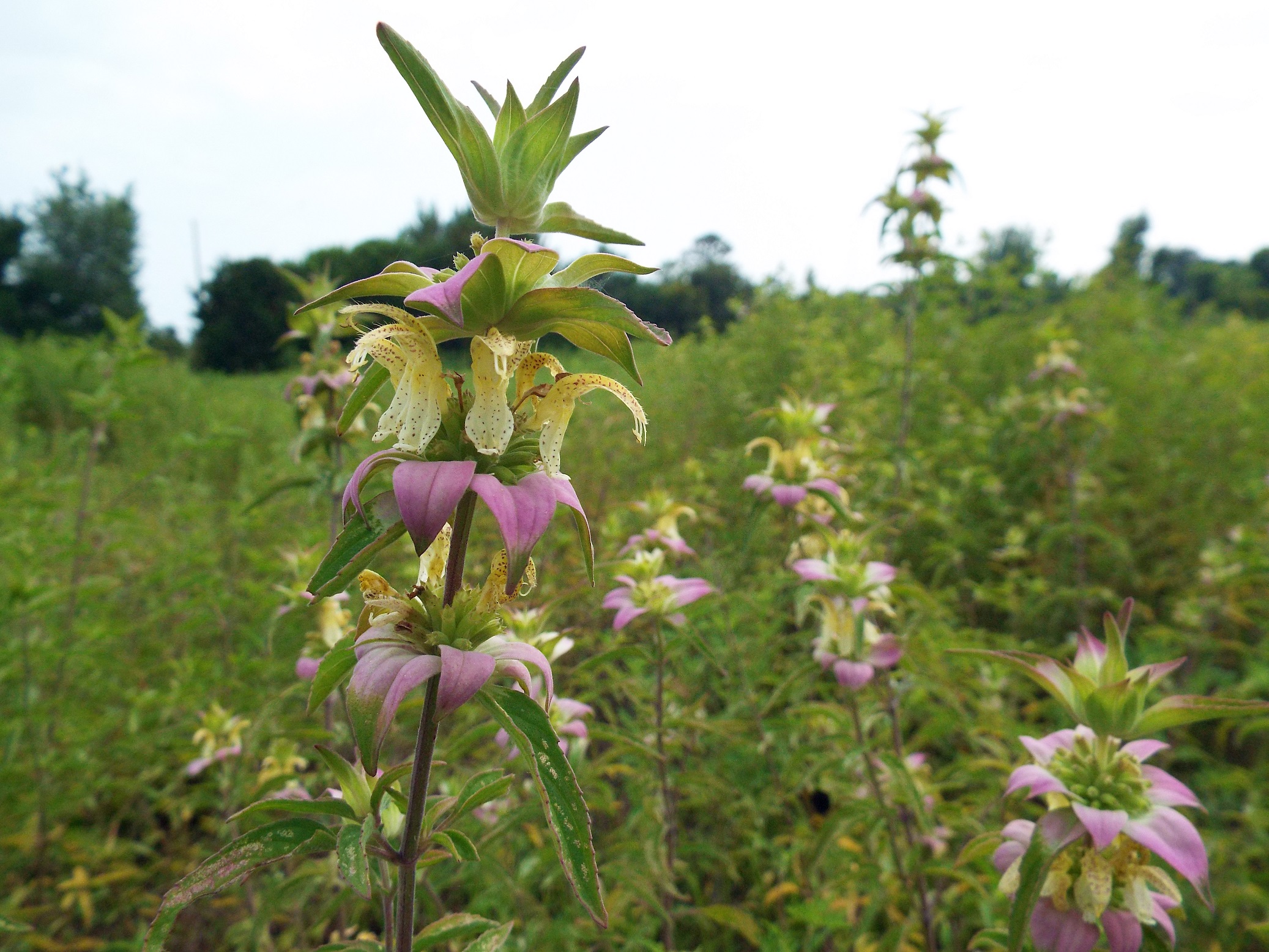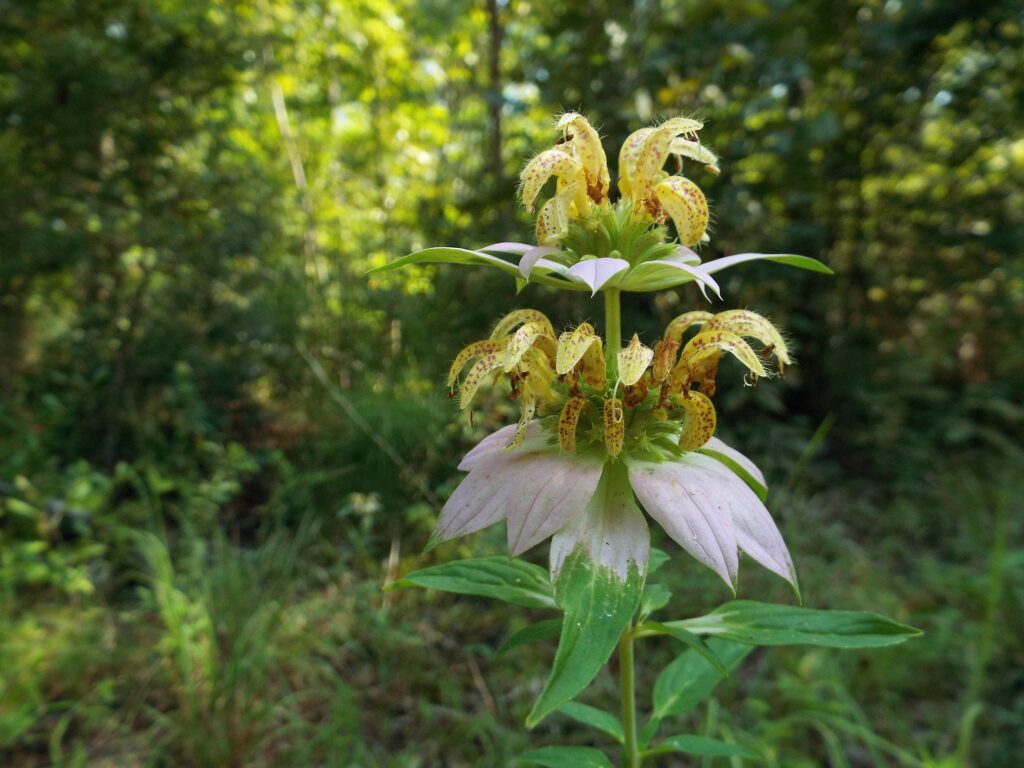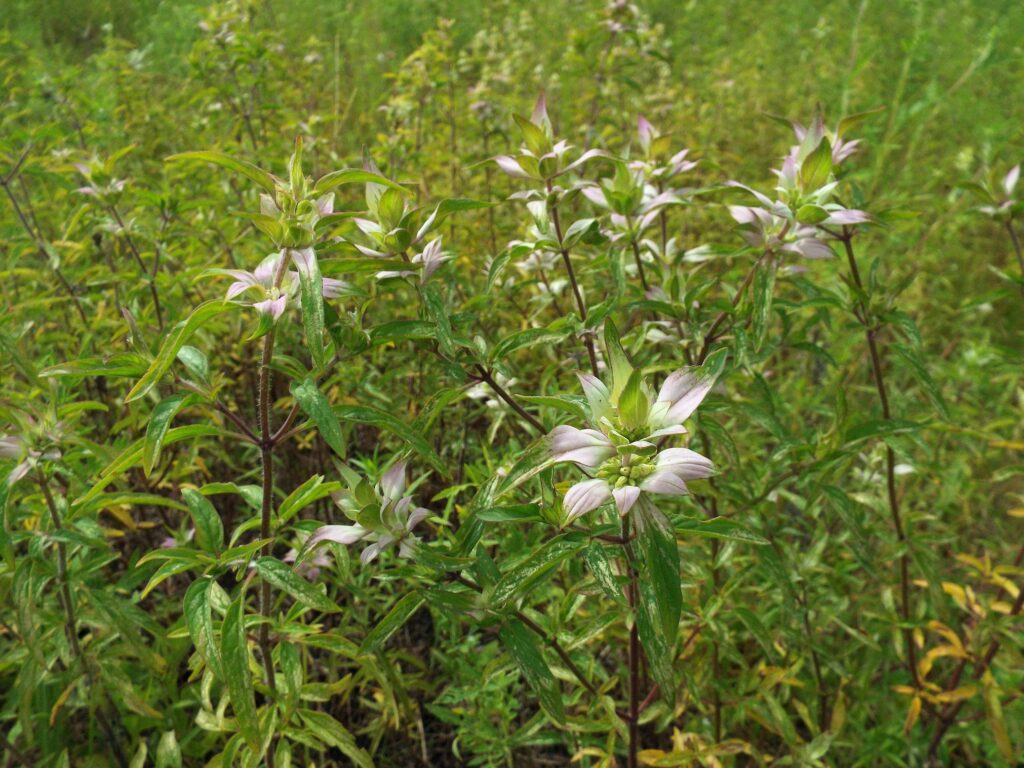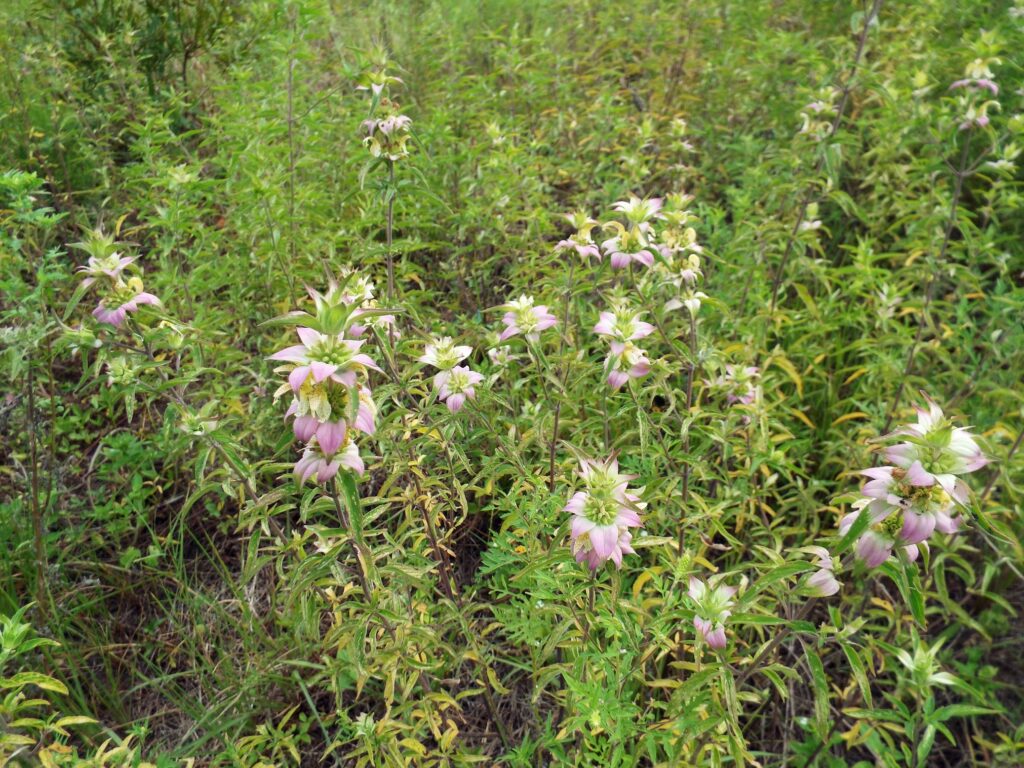



This week for Flora and Fauna Friday we have an important native nectar plant. This week we’re shining the spotlight on Spotted Beebalm or Horsemint (Monarda punctata).
Spotted Beebalm is a perennial member of the Mint family, Lamiaceae. Many other important nectar plants that bloom around Edisto this time of year are also members of the mint family. Mints have opposite leaves, laterally symmetrical flowers, and tend to produce flowers in several clumps at the nodes of a stem. Spotted Beebalm is no exception. This plant grows in clumps that can reach three feet in height and several feet around. It prefers to grow in sandy soil with plenty of sun. In late summer, Spotted Beebalm blooms, producing a rather busy looking flower. From each node of the flower stalk a whorl of pink-white bracts forms a stage. In the middle of this stage is a ball of buds from which a choir of purple speckled of golden to bone-white flowers. There can be three or more of these flower clusters stacked on top of each other and there can be dozens of flower stalks per clump of plants. Spotted Beebalm and the other members of the Monarda genus are huge draws for pollinators, especially native bees. The flowers are very abundant and produce nectar continuously. This is because Spotted Beebalm relies on pollinators to spread its pollen and bring pollen in from other plants. You can see this in the shape of their flowers. Both the pistil and stamens are located at the top of the flower and they curve inward. This forces pollinators like Bees and Wasps to rub against the stigma and anthers when they drink nectar, depositing pollen on or picking it up from their backs.